
HistoQuarterly FALLOPIAN TUBE Histology Blog
UTERUS UTERINE (FALLOPIAN) TUBES VAGINA PLACENTA MAMMARY GLANDS FEMALE REPRODUCTIVE SYSTEM The female reproductive system consists of 2 ovaries, 2 oviducts (also known as uterine or fallopian tubes), the uterus, vagina, external genitalia and 2 mammary glands.
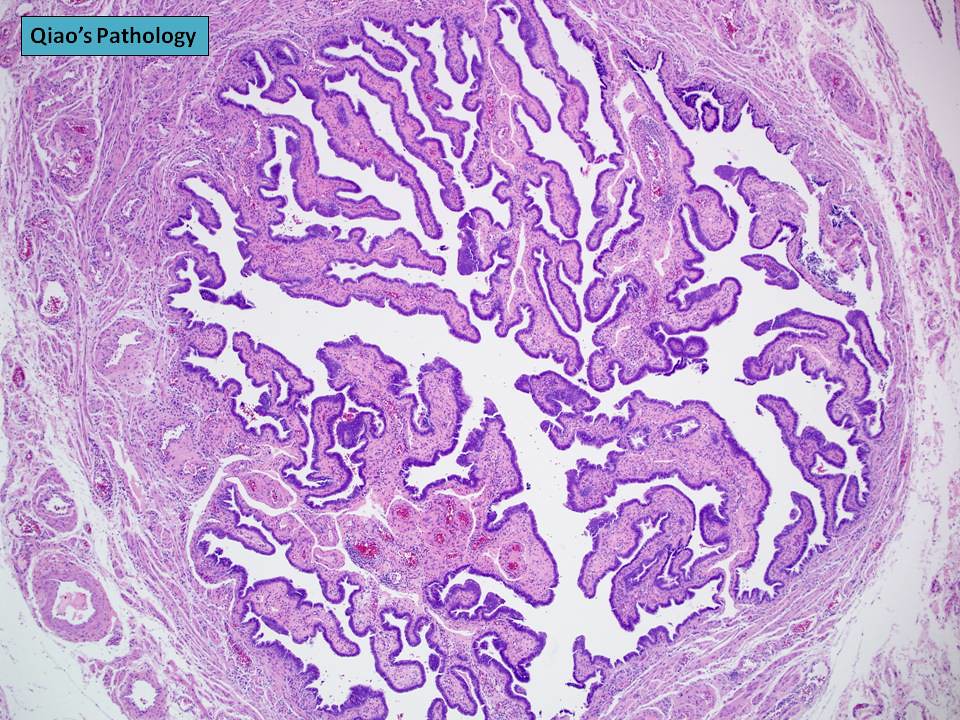
Qiao's Pathology Normal Fallopian Tube (乔氏病理学:正常输卵管) Flickr
2.2 Fallopian Tube Anatomy and Histology. The fallopian tubes traverse from the uterus to the ovary through the broad ligament and have a length of 7-12 cm . Anatomically, the fallopian tube is comprised of four regions: the infundibulum and its fimbriated end, closest to the ovary; the ampulla, the longest portion of the tube; the isthmus, a.

Dictionary Normal Fallopian tube Fallopian tubes, Glandular cells, Dictionary
fallopian tube, either of a pair of long narrow ducts located in the human female abdominal cavity that transport male sperm cells to the egg, provide a suitable environment for fertilization, and transport the egg from the ovary, where it is produced, to the central channel (lumen) of the uterus.. Each fallopian tube is 10-13 cm (4-5 inches) long and 0.5-1.2 cm (0.2-0.6 inch) in diameter.
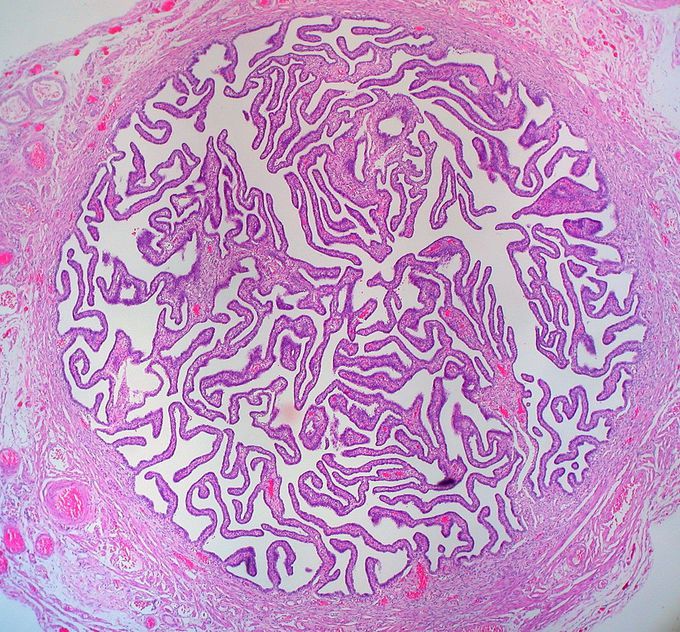
Histology of FALLOPIAN TUBE MEDizzy
Fallopian tube epithelial tumors: carcinosarcoma endometrioid adenocarcinoma high grade serous carcinoma serous adenofibroma and papilloma serous borderline tumor (pending) serous tubal intraepithelial carcinoma Fallopian tube mixed epithelial and mesenchymal tumors: adenosarcoma (pending) Fallopian tube germ cell tumors: teratoma (pending)

Basic Normal histology of fallopian tube YouTube
show labels Take a look at this low power image of the fallopian tube. Can you identify the serosa (adventitia layer), muscularis mucosa layer, the mucosa, which is very highly folded longitudinally, and the lumen. The folded mucosa are where the ova are fertilised.

Histologic image of a normal fallopian tube featuring pseudostratified... Download Scientific
The fallopian tubes are two thin tubes that extend from the uterus to the ovaries. They consist of 4 parts.
+histology+slide.jpg)
Histology Slides Database Fallopian Tube histology Slides
The fallopian tubes are bilateral conduits between the ovaries and the uterus in the female pelvis. They function as channels for oocyte transport and fertilization. Given this role, the fallopian tubes are a common etiology of infertility as well as the target of purposeful surgical sterilization. They can also be sites of ascending infection or neoplasms.
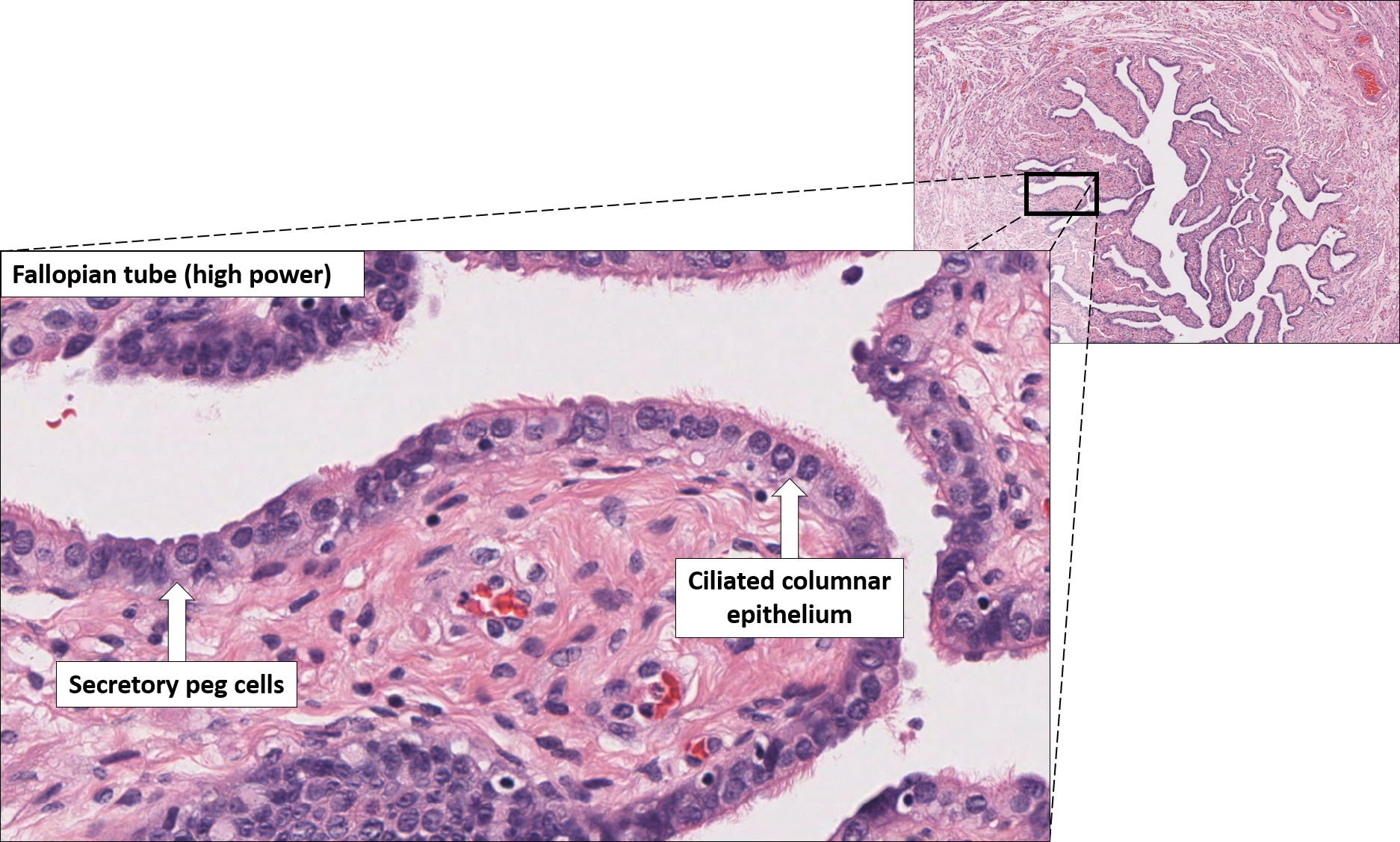
Fallopian tube Normal Histology NUS Pathweb NUS Pathweb
Results. The Fallopian tubes are muscular conduits connecting the ovaries with the uterus and are divided into the following regions: fimbriated infundibulum, ampulla and isthmus (Fig. 1).At puberty, the extra-uterine portion of the tube measures approximately 11cm and the intra-mural portion is 1.5-2cm long, these dimensions are concealed by the convolutions of the duct in situ within its.
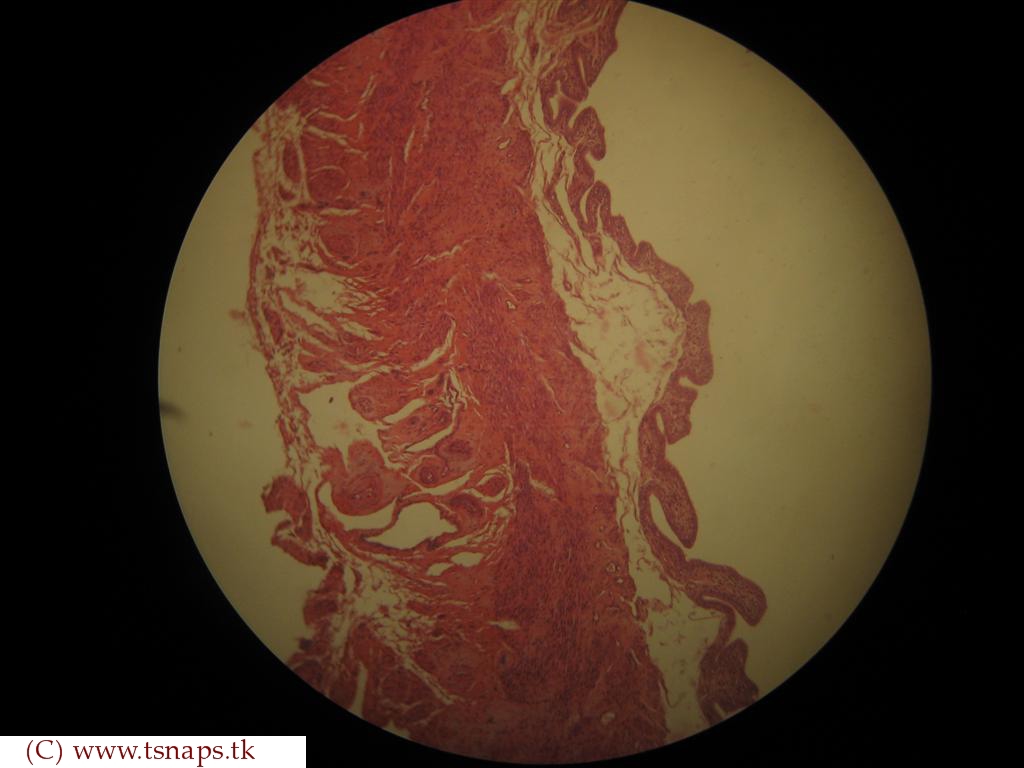+histology+slide.jpg)
Histology Slides Database Fallopian Tube histology Slides
Last updated: May 12, 2019 Revisions: 21 format_list_bulleted Contents add The uterine tubes (or fallopian tubes, oviducts, salpinx) are muscular 'J-shaped' tubes, found in the female reproductive tract. They lie in the upper border of the broad ligament, extending laterally from the uterus, opening into the abdominal cavity, near the ovaries.

Uterine/Fallopian Tube Fallopian tubes, Histology slides, Female reproductive system
1) the trapping of the egg, 2) a region where fertilization takes place, and 3) a region simply for transport to the uterus. Examine its open end near the ovary, the infundibulum View Image, in slide 240-1 and note the funnel shape and ridges of mucosa that extend as a fringe of finger-like projections known as fimbriae.

Human Biology Online Lab / Copy of Fallopian Tubes by Elynn Johnson
Histology at SIU Fallopian Tube A fallopian tube (also called uterine tube or oviduct) conducts each egg, following ovulation, from the ovary to the uterus. The wall of the fallopian tube includes an elaborately folded mucosa (endosalpinx) surrounded by a muscularis (myosalpinx).

Histology of Fallopian Tubes \ Uterine Tube YouTube
The uterine tubes (a.k.a. fallopian tubes) are important structures in the female reproductive tract, which connect the peritoneal cavity with the uterine cavity. They provide a site for fertilisation and are involved in the transport of the ovum from the ovaries to the body of the uterus. The uterine tubes are also referred to as the oviducts.

Online histology slides atlas Complete student friendly histology atlas Medic For You
Fallopian histology slide labeled diagram Let's try to identify all the histological features from the actual slide sample with the help of the fallopian histology slide labeled diagram. Suggested slides for you - The ovary histology slide with a labeled diagram A proliferative and secretory uterus histology slide with the labeled diagrams

Active Learning for the Medical Sciences Draw It to Know It
Anatomy The fallopian tubes are muscular tubes that sit in the lower abdomen/pelvis, alongside the other reproductive organs. There are two tubes, one on each side, that extend from near the top of the uterus, run laterally and then curve over and around the ovaries. Their shape is similar to an extended J.
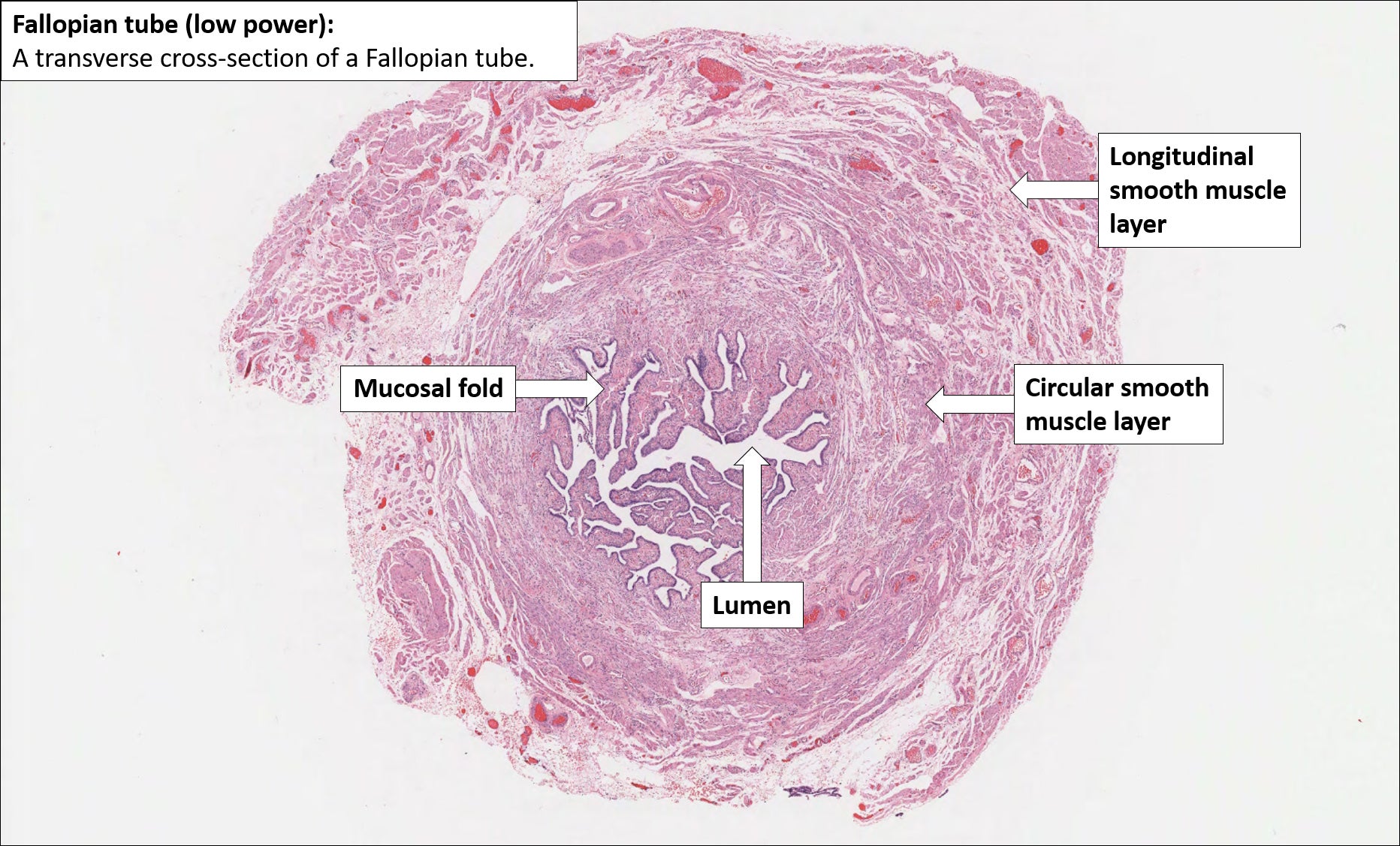
Fallopian tube Normal Histology NUS Pathweb NUS Pathweb
Physiologic functions discussed in this article include the role of the fallopian tube in sperm transport, its part in sperm maintenance and capacitation, and the tube's function in ovum transport, fertilization, and embryo transport. Clinically, the role of the myosalpinx is undetermined, although it may affect tubal motility and ovum transport.
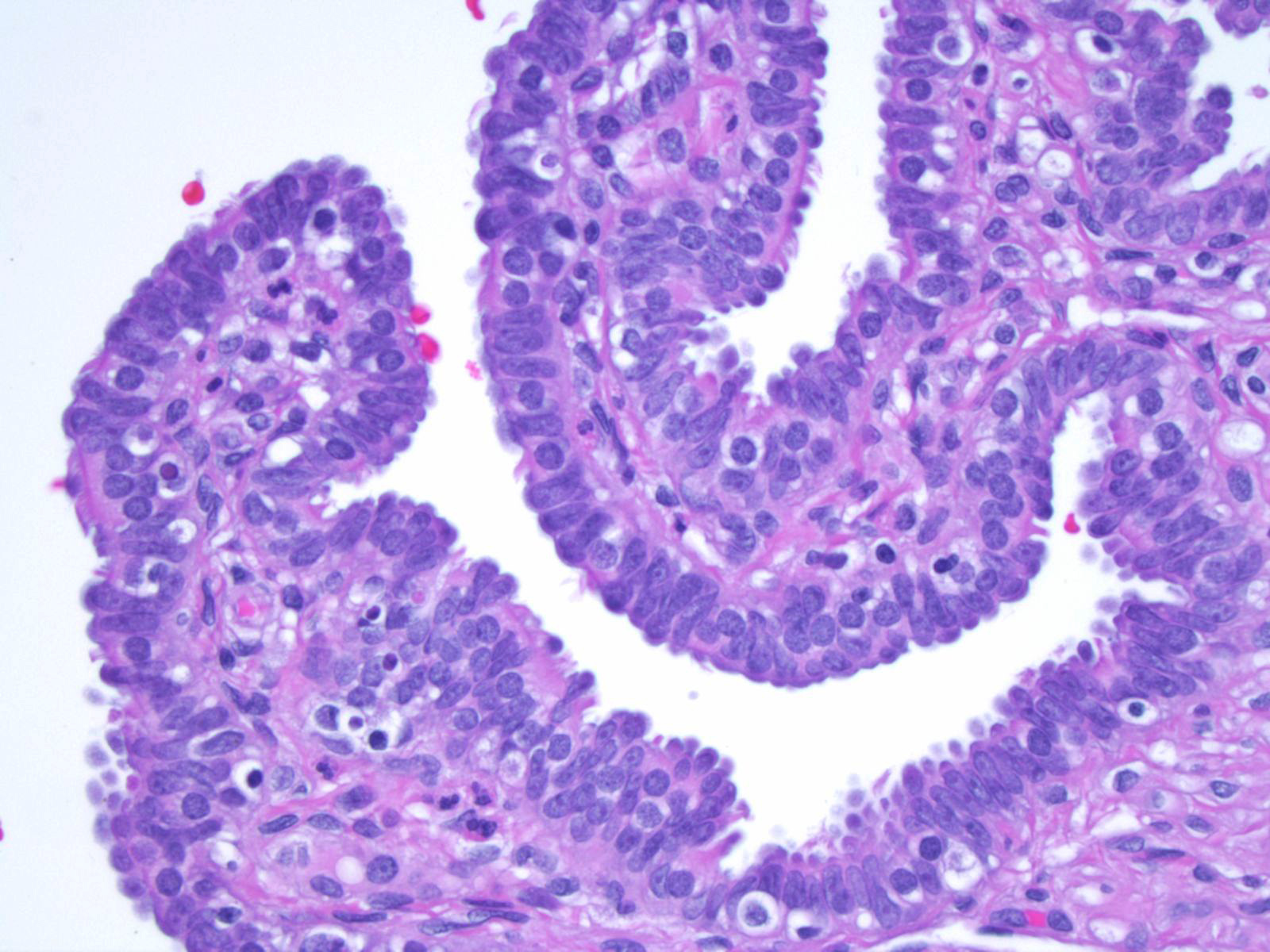
Pathology Outlines Anatomy, histology, embryology & features to report
Link of Instagram: https://instagram.com/knowing_anatomy?igshid=12mmn11n2pxe6The normal fallopian tube extends from the area of its corresponding ovary to it.